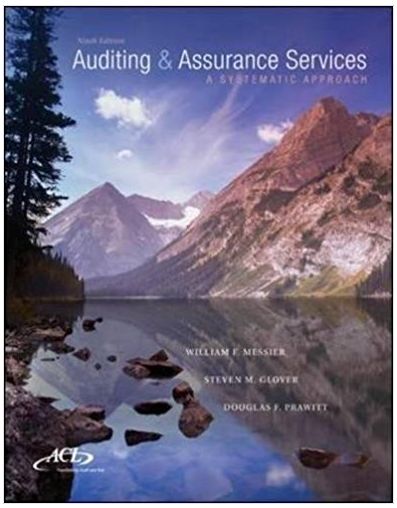Kachelmeier, CPA, is auditing the financial statements of Big Z Wholesaling, Inc., a continuing audit client, for
Question:
Kachelmeier, CPA, is auditing the financial statements of Big Z Wholesaling, Inc., a continuing audit client, for the year ended January 31, 2013. On January 5, 2013, Kachelmeier observed the tagging and counting of Big Z’s physical inventory and made appropriate test counts. These test counts have been recorded on a computer file. As in prior years, Big Z gave Kachelmeier two computer files. One file represents the perpetual inventory (FIFO) records for the year ended January 31, 2013. The other file represents the January 5 physical inventory count.
Assume that
1. Kachelmeier issued an unqualified opinion on the prior year’s financial statements.
2. All inventory is purchased for resale and located in a single warehouse.
3. Kachelmeier has appropriate computerized audit software.
4. The perpetual inventory file contains the following information in item number sequence:
• Beginning balances at February 1, 2012: item number, item description, total quantity, and price.
• For each item purchased during the year: date received, receiving report number, vendor item number, item description, quantity, and total dollar amount.
• For each item sold during the year: date shipped, invoice number, item number, item description, quantity, and dollar amount.
• For each item adjusted for physical inventory count differences: date, item number, item description, quantity, and dollar amount.
5. The physical inventory file contains the following information in item number sequence: tag number, item number, item description, and quantity.
Required:
Describe the substantive auditing procedures Kachelmeier may consider per-forming with computerized audit software using Big Z’s two computer files and Kachelmeier’s computer file of test counts. The substantive auditing procedures described may indicate the reports to be printed out for Kachelmeier’s follow-up by subsequent application of manual procedures. Group the procedures by those using
(a) The perpetual inventory file and
(b) The physical inventory and test count files. Do not describe subsequent manual auditing procedures.
Financial StatementsFinancial statements are the standardized formats to present the financial information related to a business or an organization for its users. Financial statements contain the historical information as well as current period’s financial...
Step by Step Answer:

Auditing and Assurance Services A Systematic Approach
ISBN: 978-1259162343
9th edition
Authors: William Messier, Steven Glover, Douglas Prawitt





